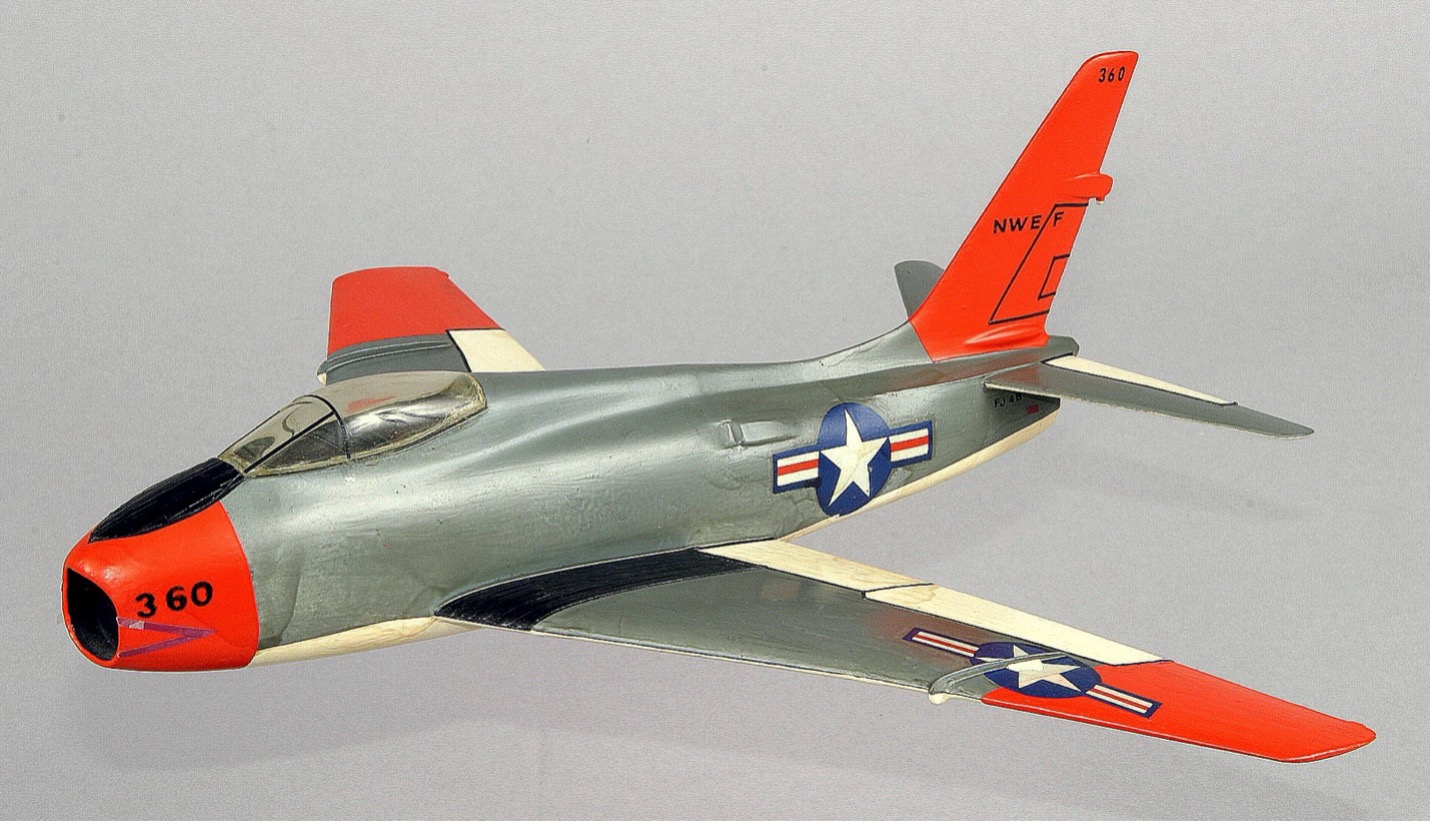USN NASWF North American FJ-4 Fury

R. Moeller
1/48
N/A
historical significance
First Albuquerque Visit: 1953
Additional Information:
The North American FJ-4 Fury is a swept-wing carrier-capable fighter-bomber for the United States Navy and Marine Corps. The final development in a lineage that included the Air Force’s F-86 Sabre, the FJ-4 shared its general layout and engine with the earlier FJ-3, but featured an entirely new wing design and was a vastly different design in its final version. The FJ-4 was designed to be an all-weather interceptor, a role that required considerable range and fuel capacity.
The first FJ-4 flew on 28 October 1954 and the delivery to the US Navy began in February of 1955.
Of the original order for 221 aircraft, 71 were modified into the FJ-4B fighter-bomber. The most important characteristic of the FJ-4B was the capability to carry a nuclear weapon. Equipped with the Low-Altitude Bombing System (LABS) for the delivery of nuclear weapons, the Navy was eager to maintain a nuclear role in its rivalry with the Air Force. In April 1956 the Navy ordered an additional 151 FJ-4Bs, for a total production of 152 FJ-4s and 222 FJ-4Bs.
Albuquerque’s Kirtland Field was designated Kirtland Air Force Base in 1947, and the Armed Forces Special Weapons Project (AFSWP) operated on Sandia Base. When the United States Air Force established the Air Force Special Weapons Command at Kirtland Air Force Base in 1949, the United States Navy formed a detachment to investigate nuclear capabilities for naval aircraft and assist the AFSWP with naval equipment for demonstrations and training. The Naval Weapons Evaluation Facility (NWEF) operated through the Cold War investigating aircraft-weapon interfaces to provide United States Navy aircraft with nuclear weapons delivery capability.
In 1952 this detachment was designated the Naval Air Special Weapons Facility (NASWF) to conduct special weapons tests on the White Sands Missile Range and Tonopah Test Range in coordination with the United States Atomic Energy Commission. In March of 1961, the NASWF was re-designated the Naval Weapons Evaluation Facility (NWEF) and its mission was expanded to include safety studies on nuclear weapons. The aircraft used for NWEF testing were decorated with the NWEF thunderbird symbol and the NWEF detachment became known as the Rio Grande Navy by its sailors and civilians.
In 1992, with the consolidation of many naval activities and the drawdown of the U.S. defense budget, NWEF became part of the large, multisite Naval Air Warfare Center Weapons Division in China Lake. In 1993 the NWEF was decommissioned and became the first nuclear-weapons-related facility in the Free World to be shut down. As NWEF closed, it transferred some of its remaining people and functions to the China Lake site.
Beginning in 1953, the North American FJ-4 Fury, Bu No. 124360, was assigned to the Naval Air Special Weapons Facility (NASWF) at Kirtland Air Force Base in Albuquerque, New Mexico for special weapons evaluation.
